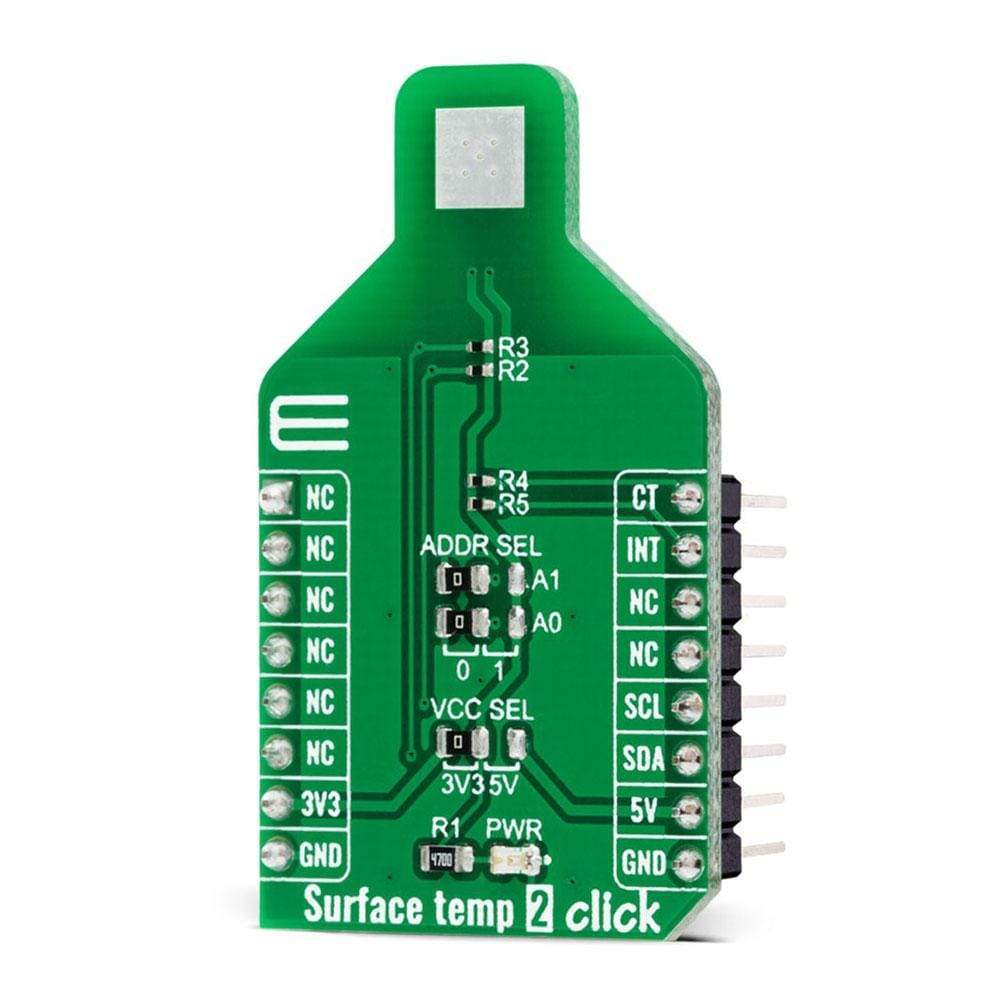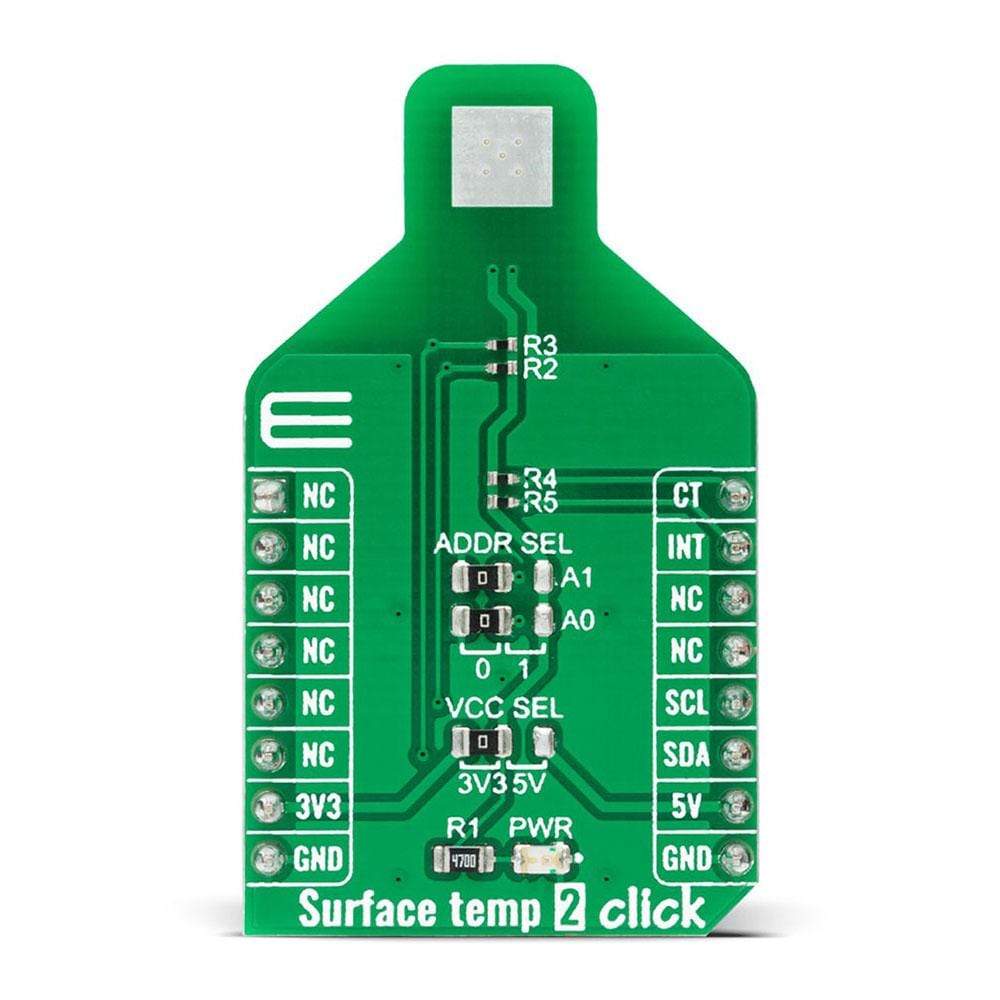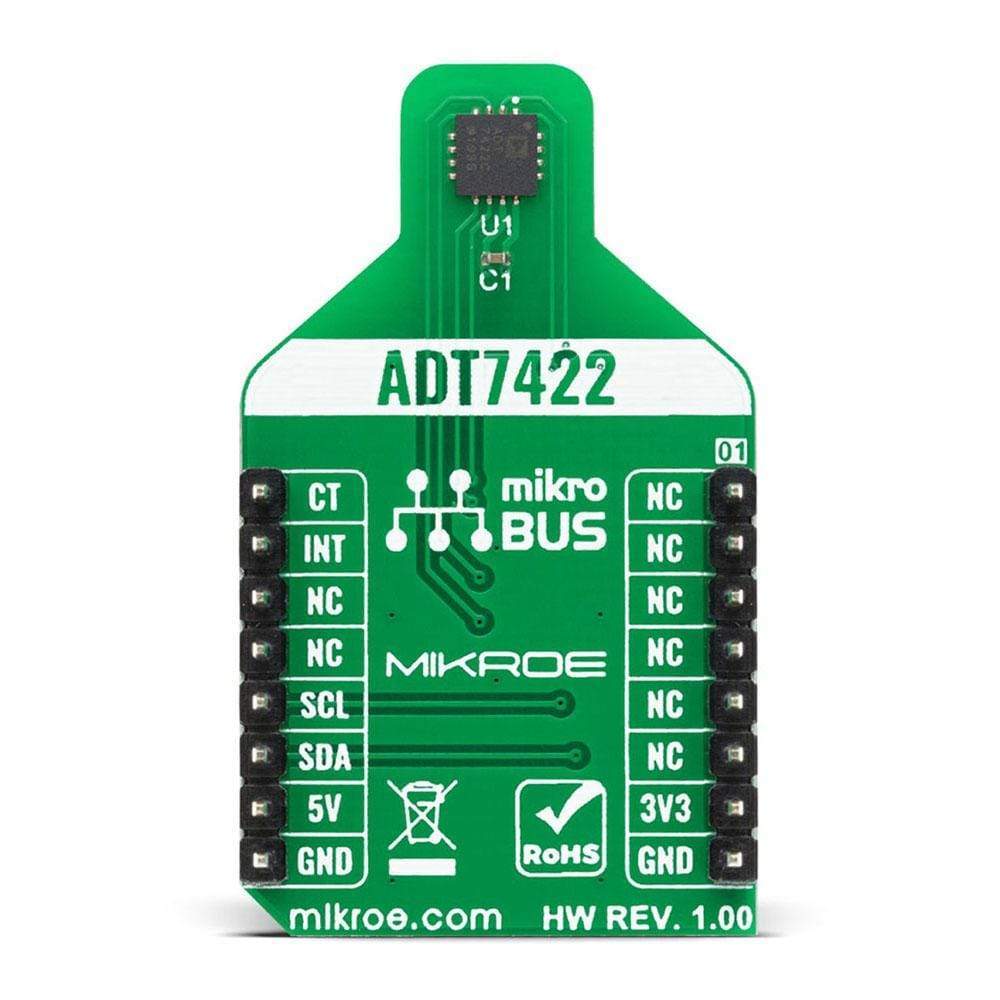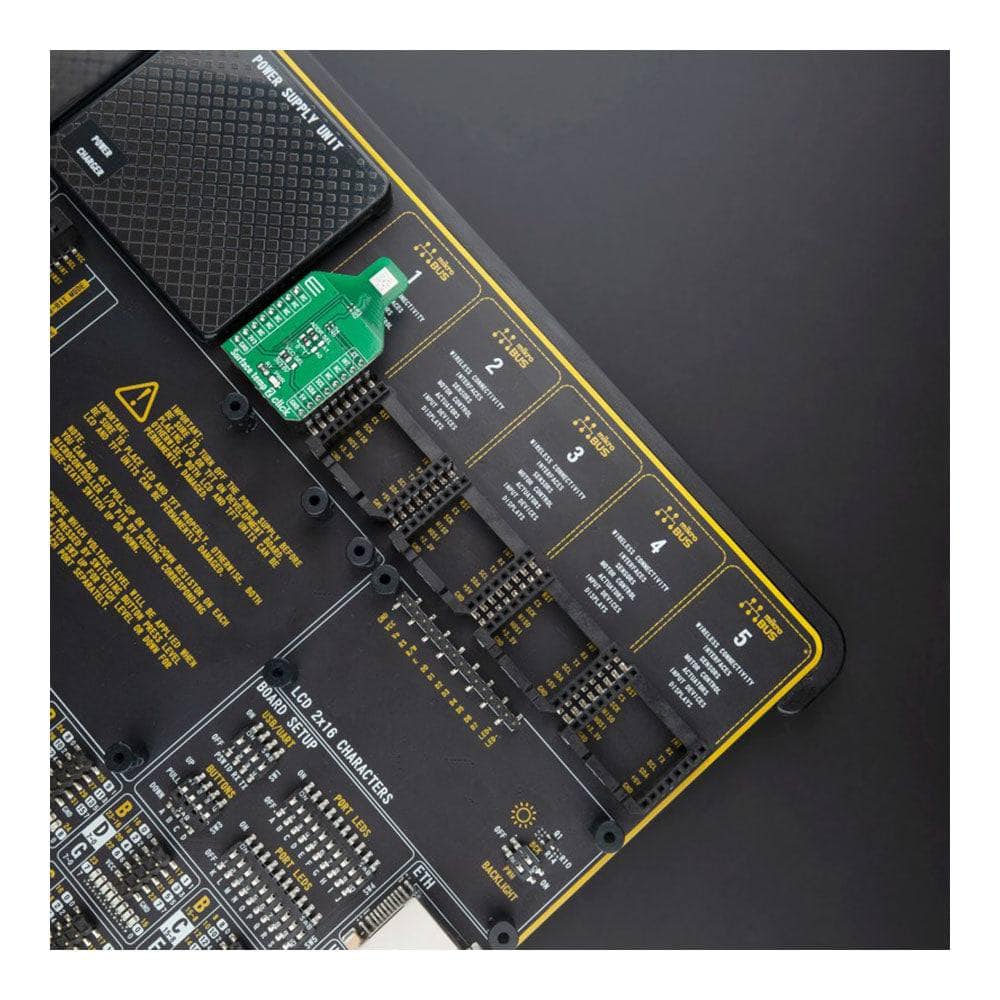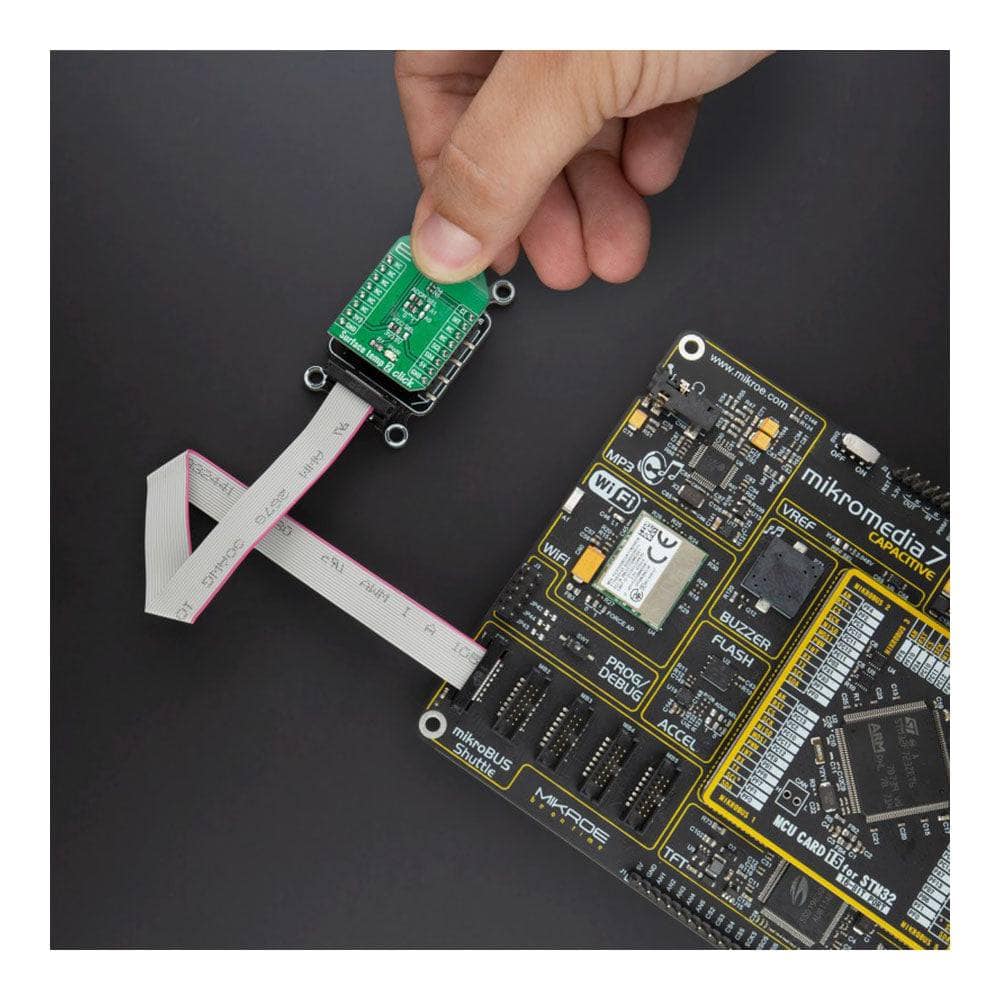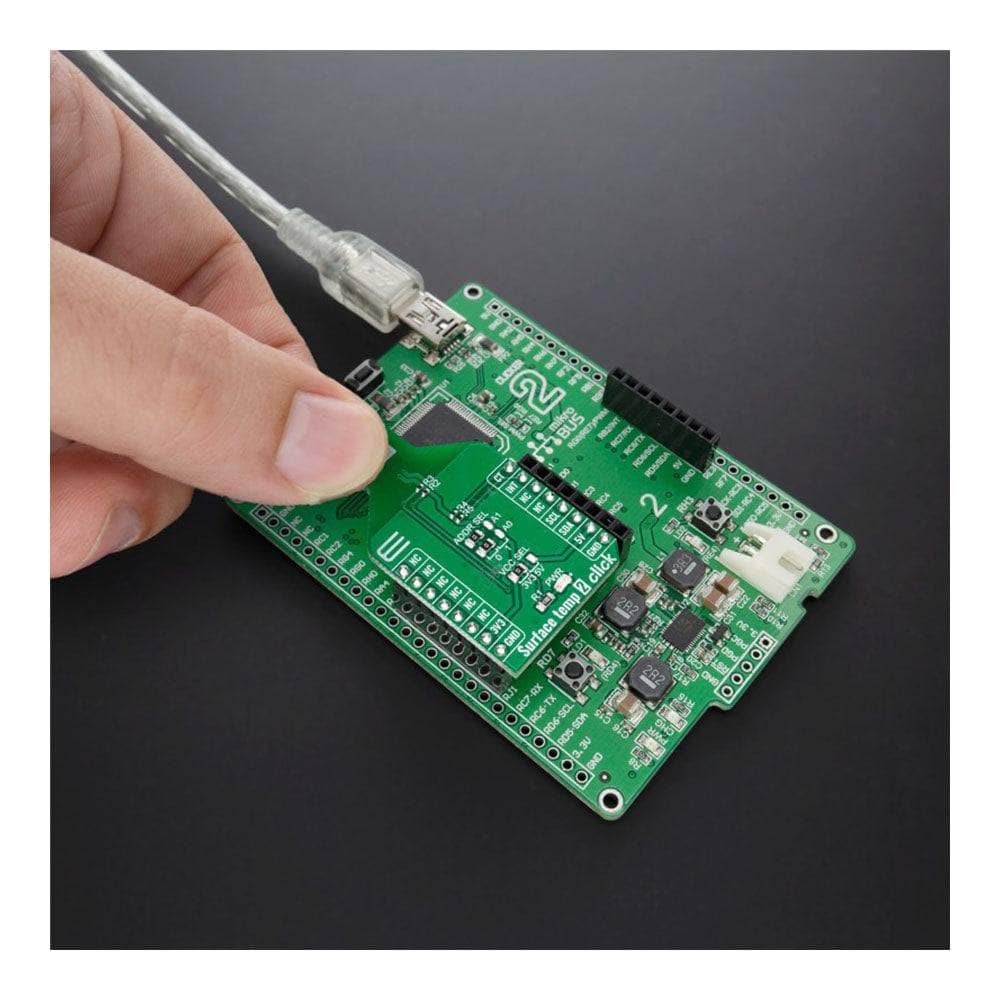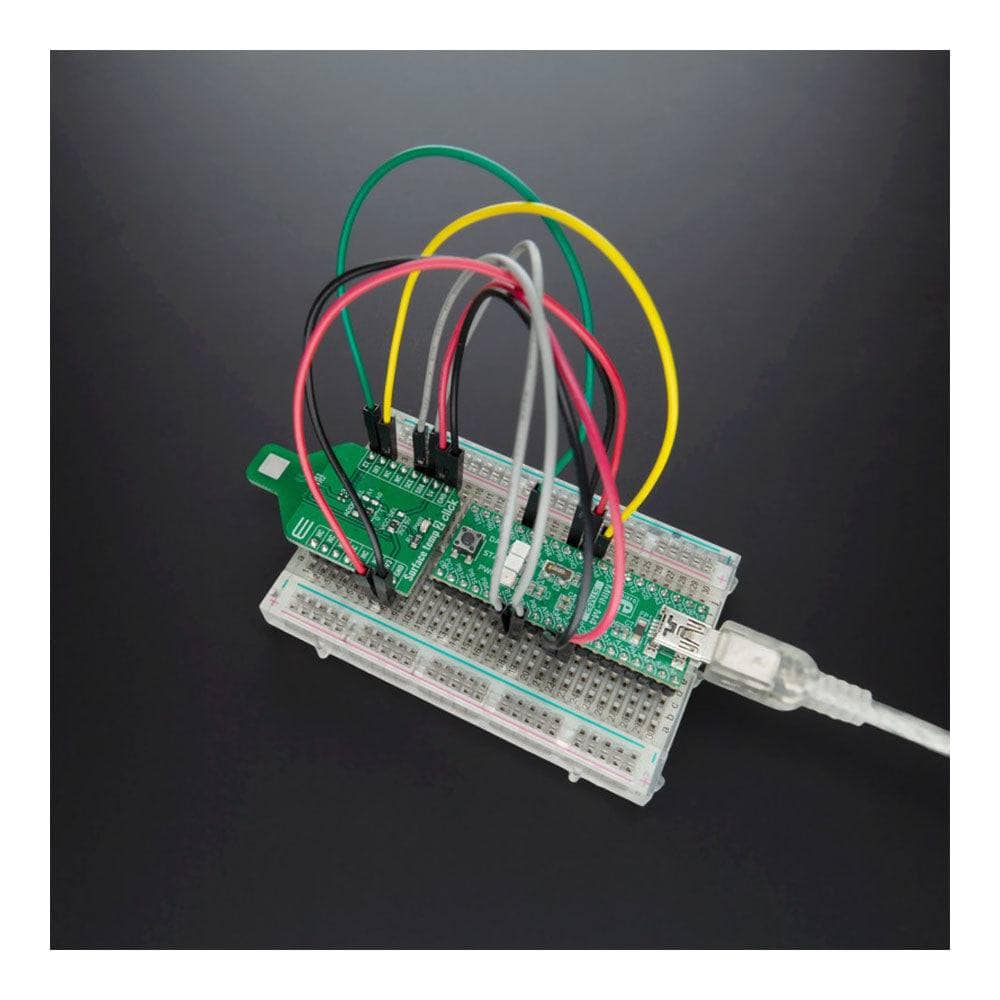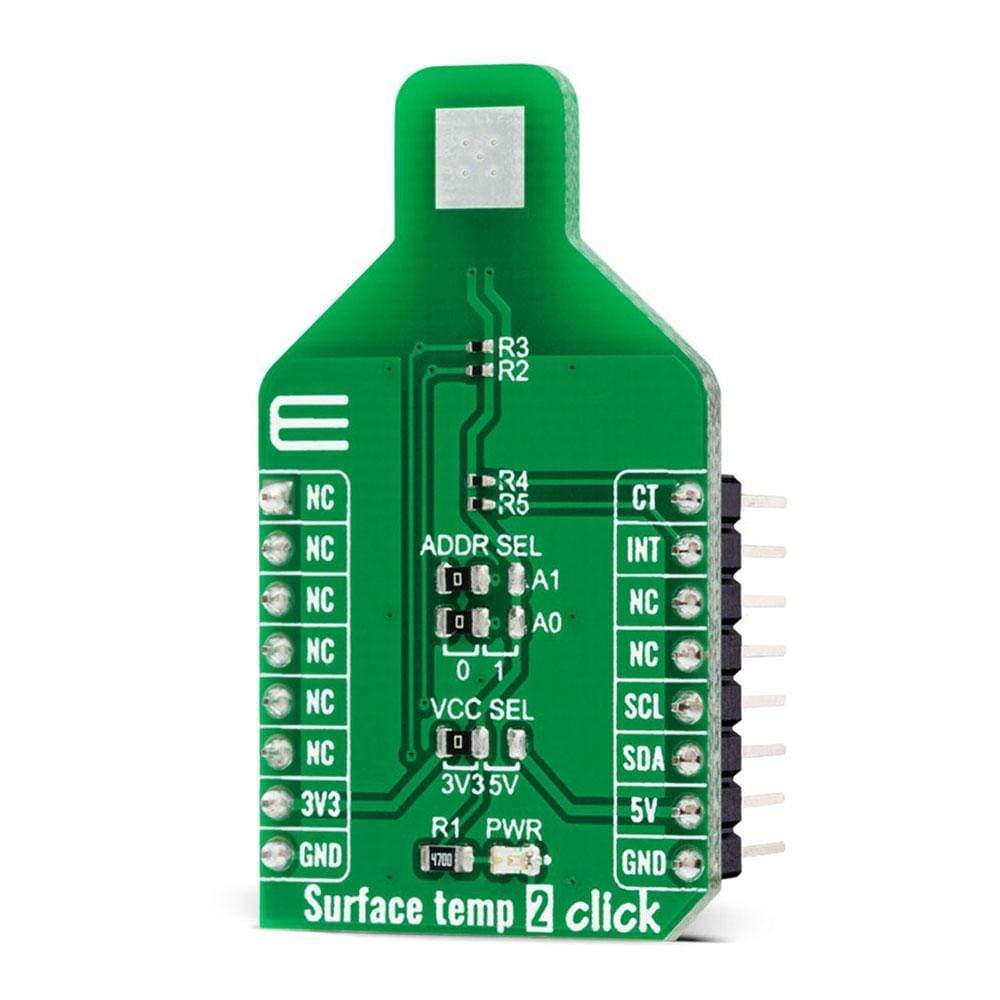
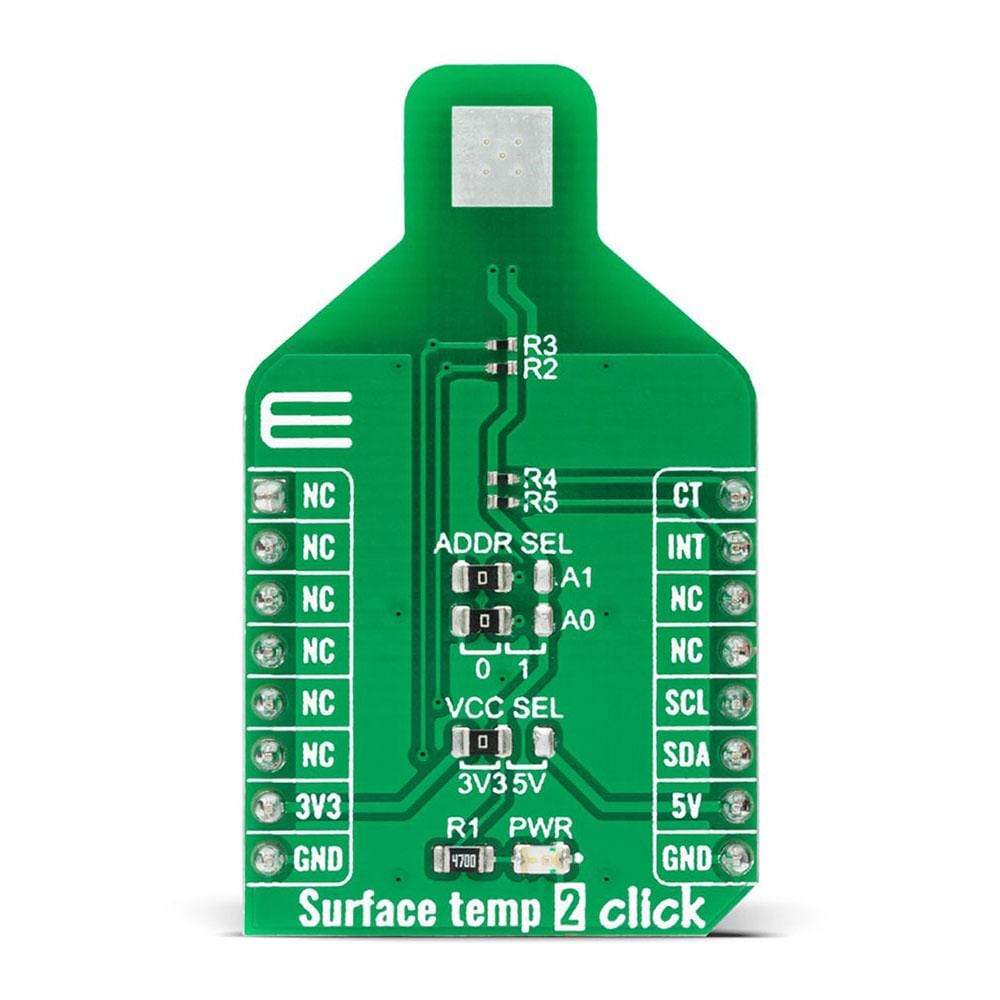
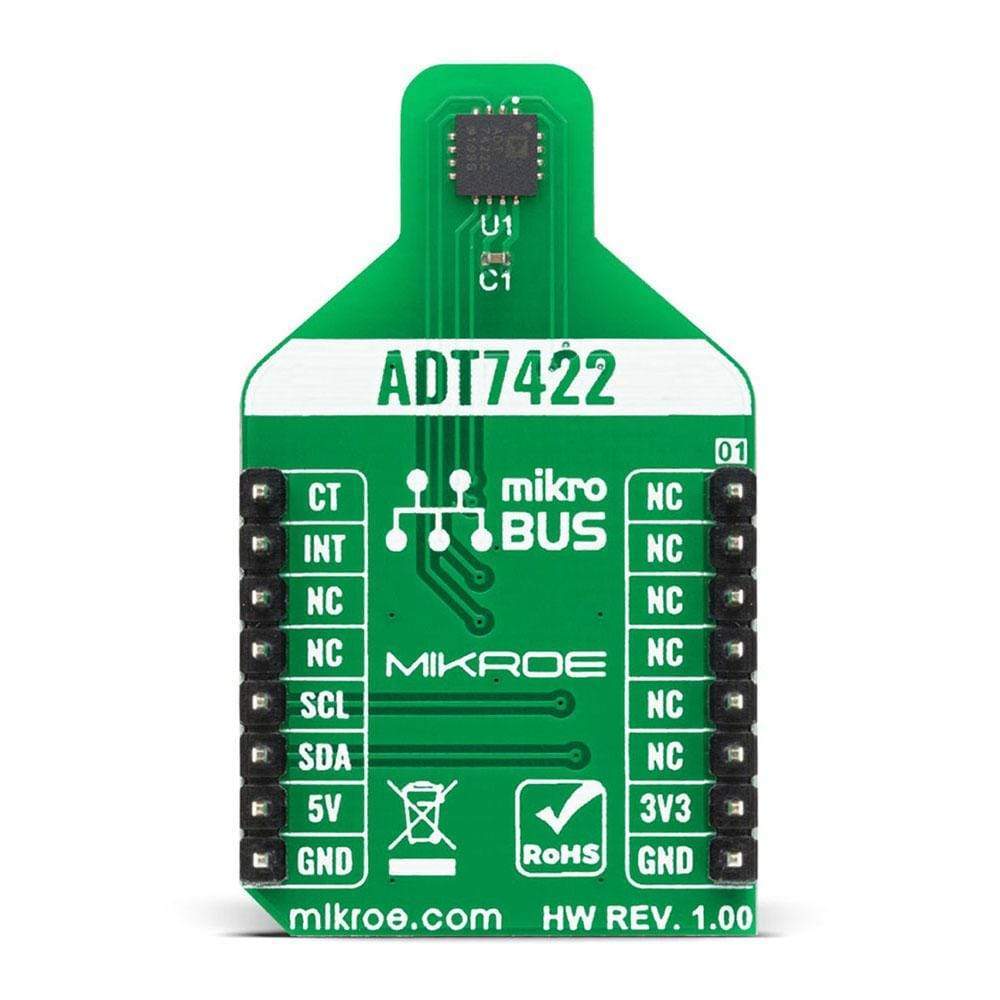
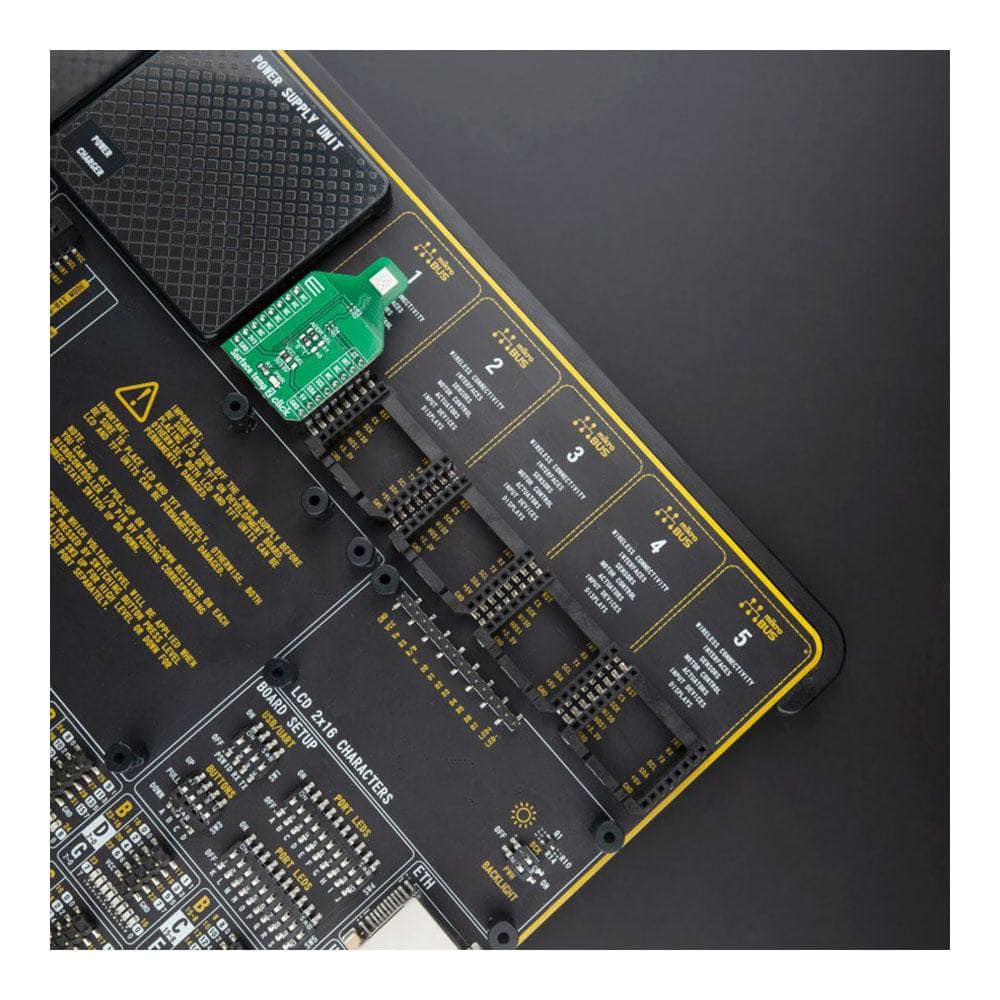
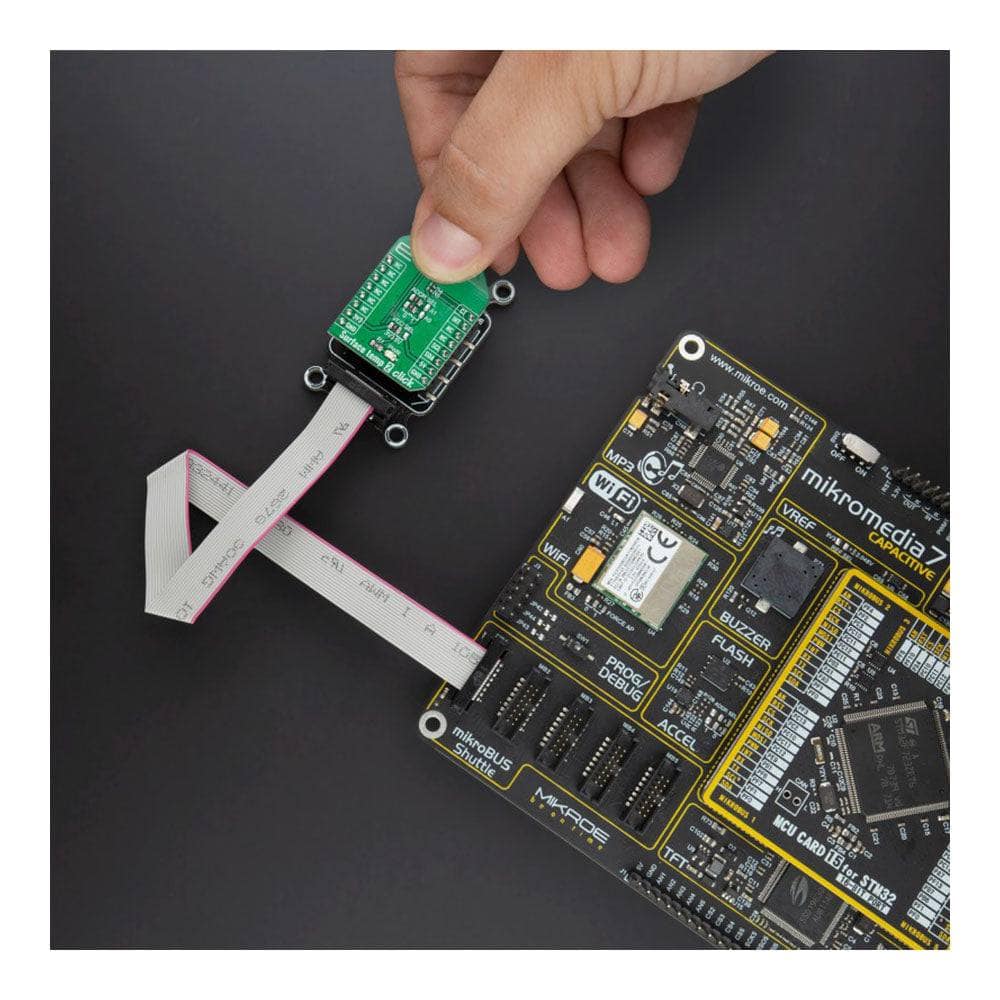
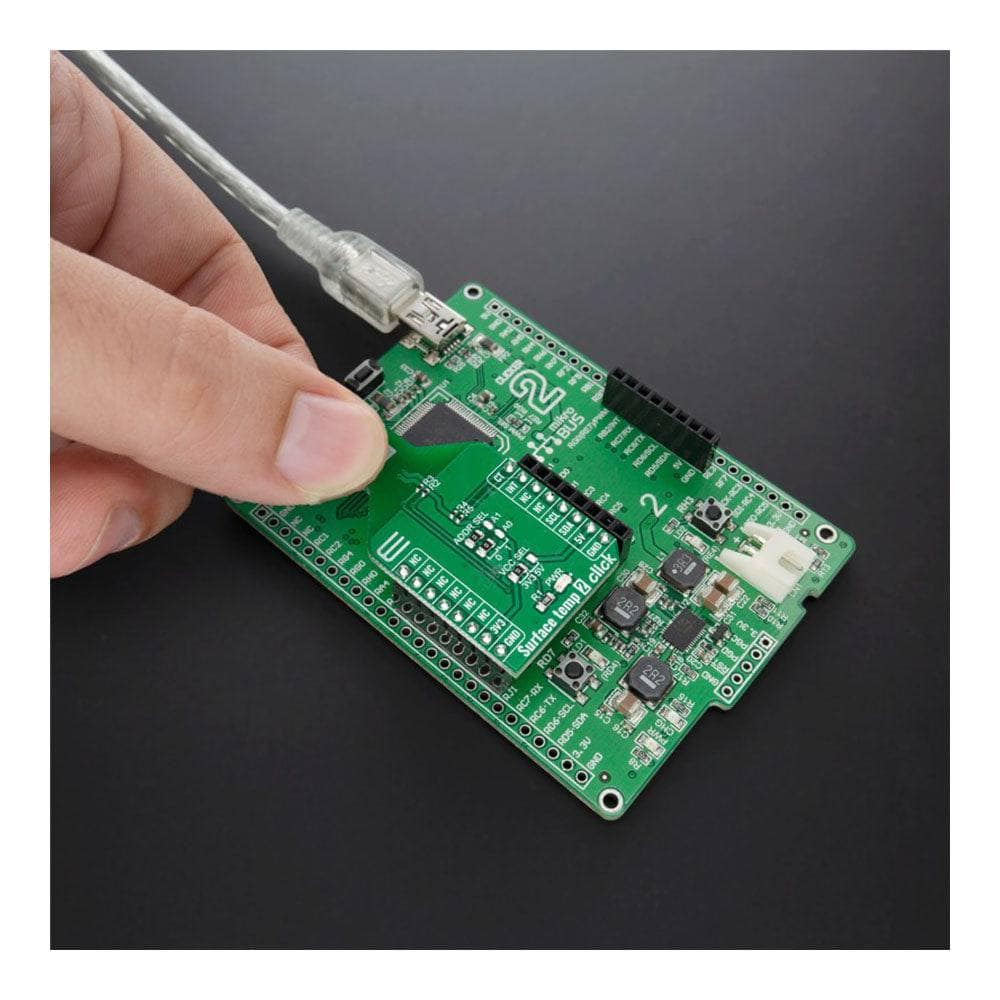
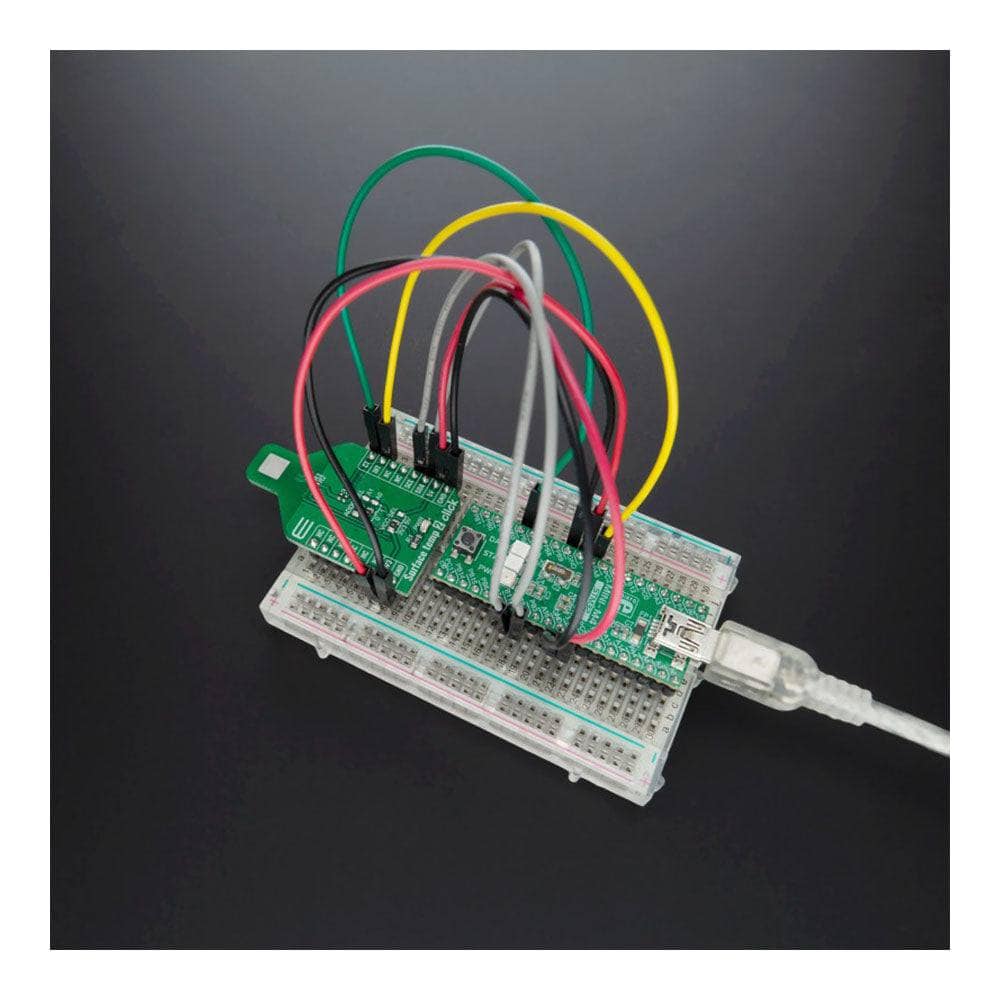
Overview
The Surface Temp 2 Click Board™ is a compact add-on board that contains a high accuracy temperature sensor offering breakthrough performance over a wide industrial temperature range. This board features the ADT7422, a 16-bit I2C temperature sensor from Analog Devices. The ADT7422 features a precision ADC that provides 16-bit temperature measurement in the range of 25°C to 50°C with a resolution of 0.0078 °C and an accuracy of ± 0.1 °C. Also, it does not require additional calibration. This makes the Surface Temp Click an excellent choice for RTD and thermistor replacement, Vital Signs Monitoring (VSM), food transportation and storage, environmental monitoring, HVAC, and other applications.
The Surface Temp 2 Click Board™ is supported by a mikroSDK compliant library, which includes functions that simplify software development. This Click Board™ comes as a fully tested product, ready to be used on a system equipped with the mikroBUS™ socket.
Downloads
How Does The Surface Temp 2 Click Board™ Work?
The Surface Temp 2 Click Board™ is based on the ADT7422, a high accuracy 16-bit digital temperature sensor with programmable interrupt and critical temperature indicator from Analog Devices. The ADT7422 has high accuracy and linearity over the entire rated temperature range without needing correction or calibration by the user. Operating at 3.3 V, the average supply current is typically 210 μA. The ADT7420 has a shutdown mode that powers down the device and offers a shutdown current of typically 2.0 μA at 3.3 V. The ADT7422 Digital Temperature Sensor is designed to meet the ASTM E1112 standard of clinical thermometry specification. This sensor is used in applications such as Vital Signs Monitoring (VSM), medical equipment, thermocouple cold junction compensation, and laser diode temperature control.
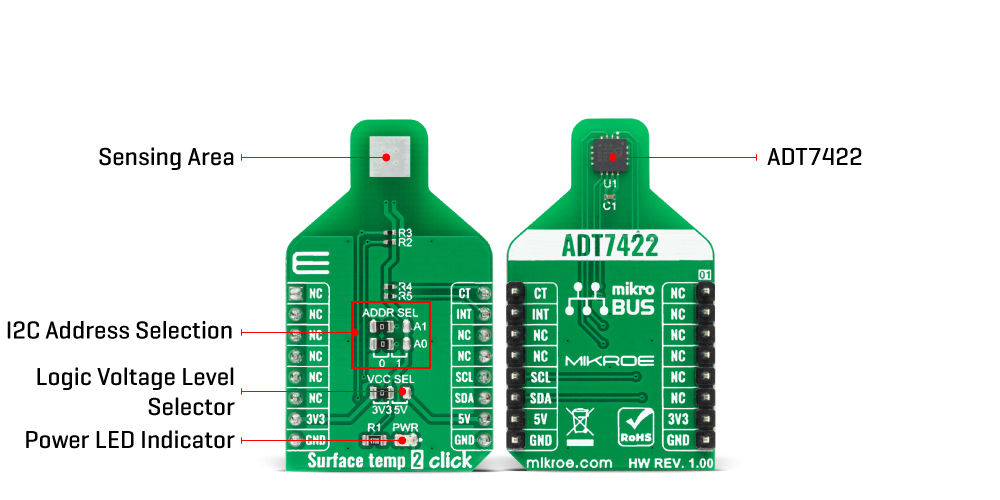
The Surface Temp 2 Click Board™ has a sensing pad, which is thermally connected to an ADT7422, for temperature sensing. It uses a 16-bit ADC to monitor and digitize the temperature to 0.0078°C of resolution. The ADC resolution, by default, is set to 13 bits (0.0625°C). An internal temperature sensor generates a voltage proportional to absolute temperature, which is compared to an internal voltage reference and input into a precision digital modulator. The sensor output is digitized by a Σ-Δ modulator, also known as the charge balance type ADC. This type of converter utilizes time-domain oversampling and a high accuracy comparator to deliver 16 bits of resolution.
The Surface Temp 2 Click Board™ communicates with MCU using the standard I2C 2-Wire interface with a maximum frequency of 400kHz. The ADT7422 has a 7-bit slave address with the first five MSBs fixed to 10010. The address pins A0 and A1 are programmed by the user and determines the value of the last two LSBs of the slave address which can be selected by onboard SMD jumpers labelled as ADDR SEL allowing selection of the slave address LSBs.
It also generates a programmable interrupt signal (over/under temperature indicator) routed on the INT pin and critical overtemperature indicator CT routed on the PWM pin of the mikroBUS™ socket. Those pins have two over/under temperature modes: Comparator and Interrupt mode. The Interrupt mode is the default overtemperature mode which sets INT pin high when the temperature is greater than the internally defined limit value, while in Comparator mode the INT pin returns to an inactive state when the temperature drops below that limit value. The CT pin is activated if a critical overtemperature event occurs.
The Surface Temp 2 Click Board™ is designed to be operated with both 3.3V and 5V logic voltage levels that can be selected via VCC SEL jumper. This allows for both 3.3V and 5V capable MCUs to use the I2C communication lines properly.
SPECIFICATIONS
| Type | Temperature |
| Applications | Can be used for RTD and thermistor replacement, medical equipment, food transportation and storage, environmental monitoring, HVAC, and other applications. |
| On-board modules | The Surface Temp 2 Click Board™ is based on the ADT7422, a high accuracy 16-bit digital temperature sensor with programmable interrupt and critical temperature indicator from Analog Devices. |
| Key Features | Low power consumption, no calibration needed, long-term stability and reliability, high accuracy for industrial, instrumentation, and medical applications, and more. |
| Interface | I2C |
| Compatibility | mikroBUS |
| Click board size | M (42.9 x 25.4 mm) |
| Input Voltage | 3.3V or 5V |
PINOUT DIAGRAM
This table shows how the pinout of the Surface Temp 2 Click Board™ corresponds to the pinout on the mikroBUS™ socket (the latter shown in the two middle columns).
| Notes | Pin |  |
Pin | Notes | |||
|---|---|---|---|---|---|---|---|
| NC | 1 | AN | PWM | 16 | CT | Critical Overtemp Indicator | |
| NC | 2 | RST | INT | 15 | INT | Overtemp and Undertemp Indicator | |
| NC | 3 | CS | RX | 14 | NC | ||
| NC | 4 | SCK | TX | 13 | NC | ||
| NC | 5 | MISO | SCL | 12 | SCL | I2C Clock | |
| NC | 6 | MOSI | SDA | 11 | SDA | I2C Data | |
| Power Supply | 3.3V | 7 | 3.3V | 5V | 10 | 5V | Power Supply |
| Ground | GND | 8 | GND | GND | 9 | GND | Ground |
ONBOARD SETTINGS AND INDICATORS
| Label | Name | Default | Description |
|---|---|---|---|
| LD1 | PWR | - | Power LED Indicator |
| JP1 | VCC SEL | Left | Power Supply Voltage Selection 3V3/5V: Left position 3V3, Right position 5V |
| JP2-JP3 | ADDR SEL | Left | Communication interface selection: Left position 0, Right position 1 |
SURFACE TEMP 2 CLICK ELECTRICAL SPECIFICATIONS
| Description | Min | Typ | Max | Unit |
|---|---|---|---|---|
| Supply Voltage | -0.3 | - | 7 | V |
| Power consumption in Normal Mode | 700 | µW | ||
| Resolution | - | 16 | - | bit |
| Temperature accuracy from −40°C to +125°C | -40 | - | +125 | °C |
| Temperature accuracy from −40°C to +125°C | - | ±0.50 | - | °C |
| General Information | |
|---|---|
Part Number (SKU) |
MIKROE-4266
|
Manufacturer |
|
| Physical and Mechanical | |
Weight |
0.017 kg
|
| Other | |
Country of Origin |
|
HS Code Customs Tariff code
|
|
EAN |
8606027380471
|
Warranty |
|
Frequently Asked Questions
Have a Question?
Be the first to ask a question about this.

